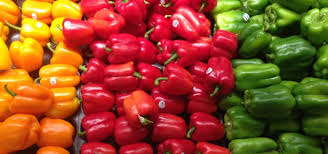The name “capsicum” has several possible sources. It may derived from the Green “kapto”, which is “to gulp”, referring to the spicy heat of chili peppers when you eat them. Or, it may derived from the Latin “capsa”, which translates to “box”, potentially referring to the hollow nature of most chili peppers.
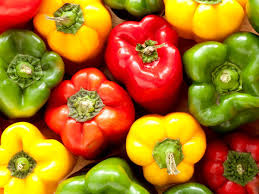
Available in different colours, capsicum is used across the world in many different types of dishes. The vegetable, which is also known as bell pepper, originated in tropical America and has been used as a medicine because of its medicinal properties. It is low in fat and is a remedy for many diseases. The vegetable is one of the best sources of carotenoids like beta-cryptoxanthin, zeaxanthin and lutein. It is also rich in vitamins, minerals and other nutrients. Here is a list of some of the health benefits of eating capsicum.
- Capsicum annuum
- Capsicum Baccatum
- Capsicum chinense
- Capsicum Frutescens
- Capsicum Pubescens
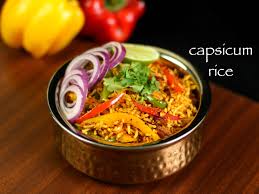
Capsicum frutescens is a species of chilli pepper that most likely originated in Central or South America. It grows very well in this area of the world and still grows there both as a wild plant and in cultivation. There are varieties of capsicum frutescens that are annual and varieties that are perennial in nature, and the flowers that these peppers produce are usually white or greenish-white in colour.
Generally speaking, the fruit they produce starts off yellow and then darkens into red upon complete maturity. The place where the Capsicum frutescens variety of pepper is used most often is likely in Ethiopian cuisine – it has been cultivated there ever since the 19th century. Today the plant is still used heavily in many kinds of African cooking, though it is less popular in other parts of the world. It has also shown up occasionally in the cuisine of North Africa, featuring in both Moroccan and Egyptian
Capsicum frutescens is available in most supermarkets in developed countries, generally in the speciality aisle. It has a unique spice that is augmented by an underlying sweetness, and many who try this variety of pepper find themselves hooked.
Capsicum chinense
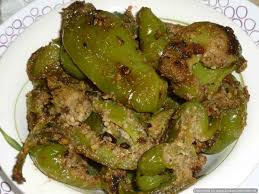
Capsicum chinense is often known as the yellow lantern chilli when it is presented in English-speaking markets, mostly due to the unique pumpkin-like fruits that this variety of chilli pepper produces. The most well-known version of this pepper is the habanero, which is one of the hottest chillies regularly available for consumption in most supermarkets and is the most popular in dishes.
These peppers are native to the Yucatan Peninsula area of Central America and on the Caribbean islands. Even as an annual plant, however, the seedlings will germinate after the cold part of the year and the plant will live on.
Capsicum chinens have high ornamental value as well as their use in cooking. They have unusually shaped flowers and a variety of different shapes for the fruit itself, so many gardeners use them to spruce up their flowerbeds as well as their dinners.
In restaurants, these peppers are popular for their potency. Most Western cuisine as a whole is not overly spicy, but elements of dishes that require kick often use Capsicum chinense peppers, due to how potent they are. They are a very cost-effective ingredient in many Western kitchens for this reason – you need fewer of them to pack a punch in a dish!

It is native to the northern regions of its area, so it is unique in its ability to withstand much cooler temperatures than its other chilli brethren. If you’re on the lookout for these and you live away from their main agricultural areas, consider looking online for the dried varieties. These are easier to find and are often just as hot and useful in cooking as their fresh counterparts.
Capsicum Baccatum
There are a variety of different peppers that are under this branch of the pepper family, but the most famous variety is probably the Ajj Amarillo or the Amarillo chilli.

If you are looking for Capsicum Baccatum, your best bet is likely with a South American supermarket. Since these peppers are such an integral part of Peruvian cuisine, any South American supermarket is likely to have Amarillo chillies dried, if not fresh and on the shelf. Good for your heart
Lycopene, a phytonutrient, in the red capsicum, keeps your heart healthy. The vegetable is a rich source of folate and vitamin B6, which lowers homocysteine levels, thereby lowering the risk of heart disease. It also contains antioxidants that protect the body against free radicals. The warming properties of capsicum enable it to alleviate hypotension and an abnormal heart rate. Capsicum has a vasodilative effect on the body when consumed which helps in enhanced oxygenation of organ tissues and improves blood flow.
Lowers the risk of cancer
Capsicum lowers the risk of cancer as it contains anti-inflammatory nutrients and antioxidants. The carotenoid lycopene present in the bell pepper is also effective in lowering the risk of cervix, prostate, pancreas and bladder cancer. The enzymes in capsicum help in the prevention of oesophagal and gastric cancer as well.
Antioxidant Properties
Bell pepper is rich in antioxidants, which protect the body against free radicals and the damage caused by them. Your body contains free radicals that cause damage to blood vessels and cellular damage. By fighting these free radicals, the capsicum help in curing diseases like cataract and osteoarthritis.
Improves immunity
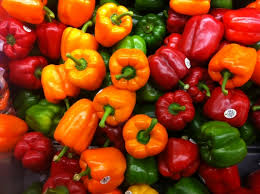
Vitamin C in this vegetable decreases the risk of arthritis and improves immunity. It also helps reduce inflammation. Capsicum also has vitamin K, which is important for blood clot formation.
Relieves pain
It is effective in treating pain related to herpes zoster and neuralgia. It provides pain relief.
Cures iron deficiency
It is rich in vitamin C, which plays an important role in the absorption of iron by the body. It contains around 300 per cent of the daily requirement of vitamin C. If you suffer from iron deficiency, eat red bell peppers.
Capsicum or bell pepper also has many beauty benefits. Include capsicum in your diet to improve your skin health and have long, shiny hair.
It is Good for Your Eyes

Capsicums are seed pods. They can be red, green, yellow, orange, white, purple-brown and lime green. Green and red come from the same plant, however yellow, orange, white and purple are different varieties. Red, orange, yellow and green capsicums are readily available. White, purple-brown and lime green capsicums have a more limited supply. Capsicums are sweet and juicy with a mild spicy flavour. Red capsicums, being riper, are sweeter than green capsicums. The shape also varies with each variety, from the more commonly found blocky shape to a pointy capsicum. Miniature varieties are sometimes available.
Capsicum Cures food poisoning
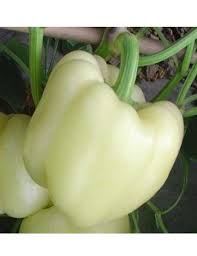
Capsicum has analgesic and antiseptic properties which help in treating food poisoning. It reduces cramps and alleviates stomach spasms and pain. It also helps repair the damaged tissues in the stomach and the gastrointestinal tract.
Capsicum Side-Effects & Allergies
Though there are no fatal or chronic side-effects associated with the use of capsicum it is advisable to use the plant on the advice of a trained medical practitioner pertaining to your condition. It is advisable for children, pregnant women and breastfeeding mothers to keep their regular consumption of capsicum to a bare minimum. Known side effects due to unguided consumption are diarrhoea, heartburn and upset stomach.
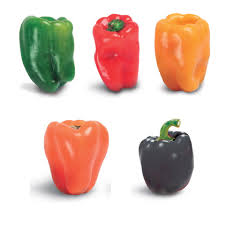
- Pain. Applying creams and lotions containing capsaicin, the active chemical in capsicum, can temporarily relieve chronic pain from several conditions, including rheumatoid arthritis, osteoarthritis, back pain, jaw pain, psoriasis, and other conditions.
- Nerve damage caused by shingles (postherpetic neuralgia). Applying a patch containing 8% capsaicin (Qutenza, NeurogesX Inc.), the active chemical reduces pain over 24 hours by 27% to 37% in people with nerve damage caused by shingles.
- Nerve pain in people with diabetes (diabetic neuropathy). Some research shows that applying a cream or using a skin patch containing capsaicin, the active chemical found in reduces pain in people with diabetic neuropathy. Another patch containing 8% capsaicin (Qutenza, NeurogesX, Inc.), which is available by prescription only, has also been studied. Creams or gels that contain less capsaicin than 0.075% don’t seem to work. The lotion used less frequently than 4 times daily also might not work.
- Back pain. Some research shows that applying a plaster that contains it to the back can reduce low back pain.
- Cluster headache. Some research shows that applying capsaicin, the active chemical in capsicum, inside the nose reduces the number and severity of cluster headaches. It’s best to apply capsicum to the nostril that is on the same side of the head as the headache.
- Osteoarthritis. Some research shows that applying capsaicin 0.025%, the active chemical in capsicum, to the skin can improve symptoms of osteoarthritis. our Facebook page visit Related post
